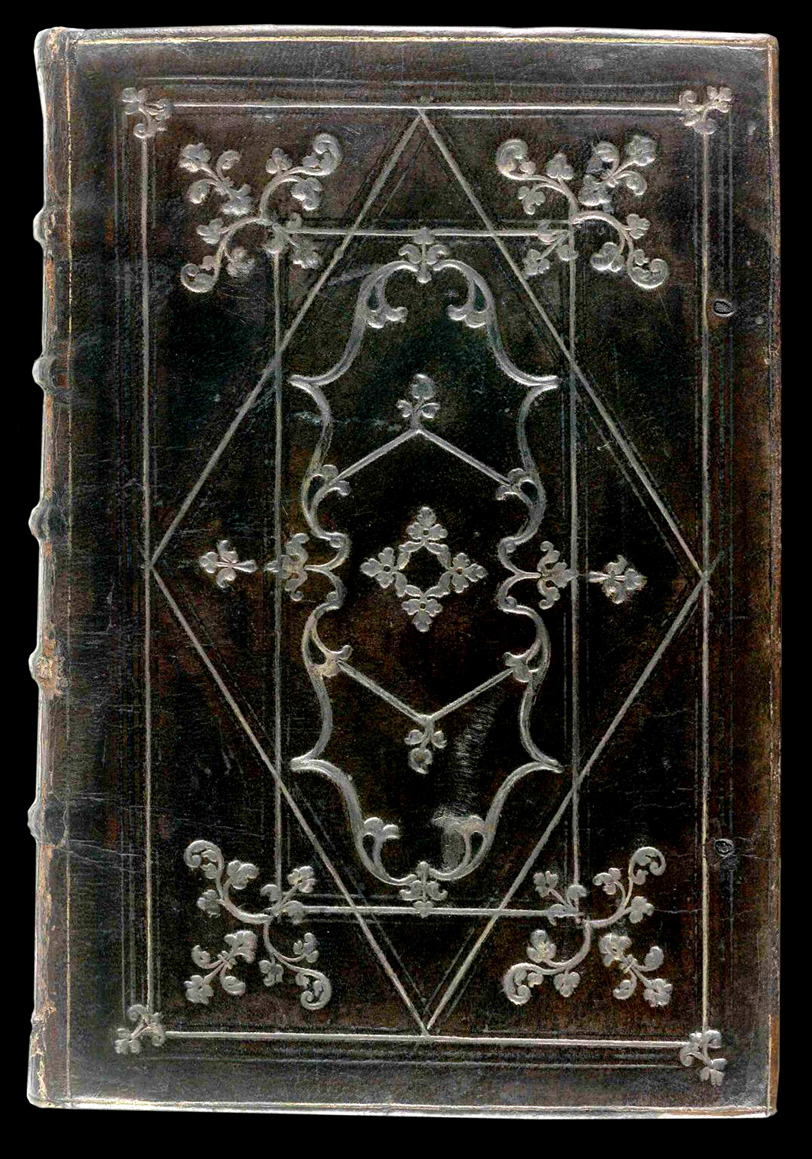

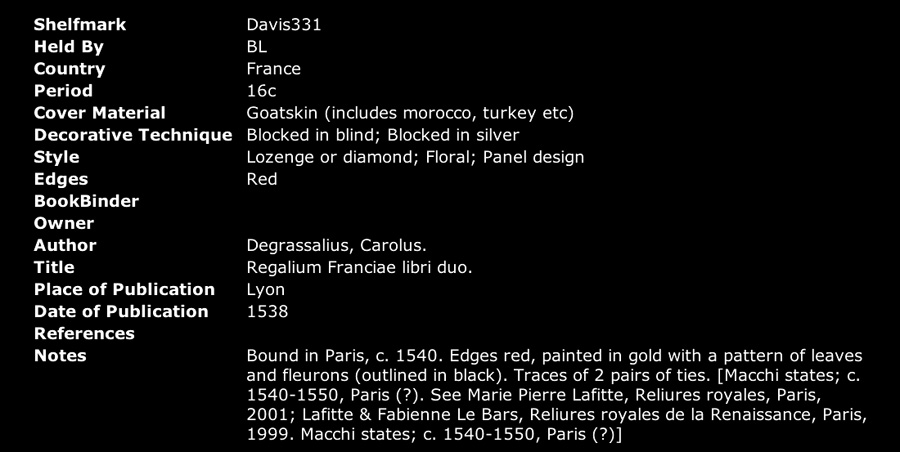
| I discovered this binding while randomly searching through all the 16c bindings in the British Library Database of Bookbindings (BLDB). Even though the imprints are very heavy handed or perhaps painted over, I still thought I recognized some of these imprints. Then when I started making comparative diagrams I discovered that three of them were relatively rare in fact only found on one of the bindings we have been looking at on the previous page, Reliures Royales binding number 9. |
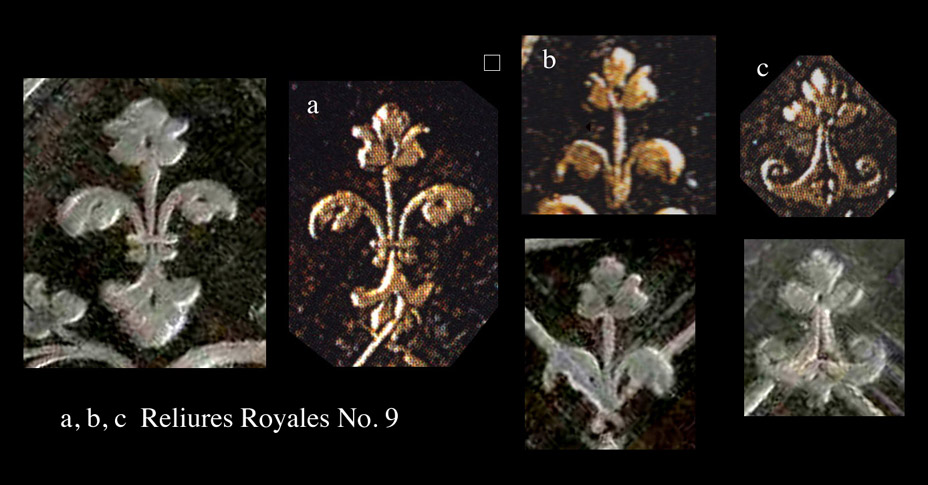
| In their masterful work Reliures royales de la Renaissance, Lafitte and Fabienne Le Bars question the attribution of binding number 9, to Étienne Roffet, perhaps due to a number of tools never before seen in the bindings of Roffet. Now with this Davis331 example I am going to explore the two bindings to see if we can find good reasons to attribute these bindings to Roffet. |
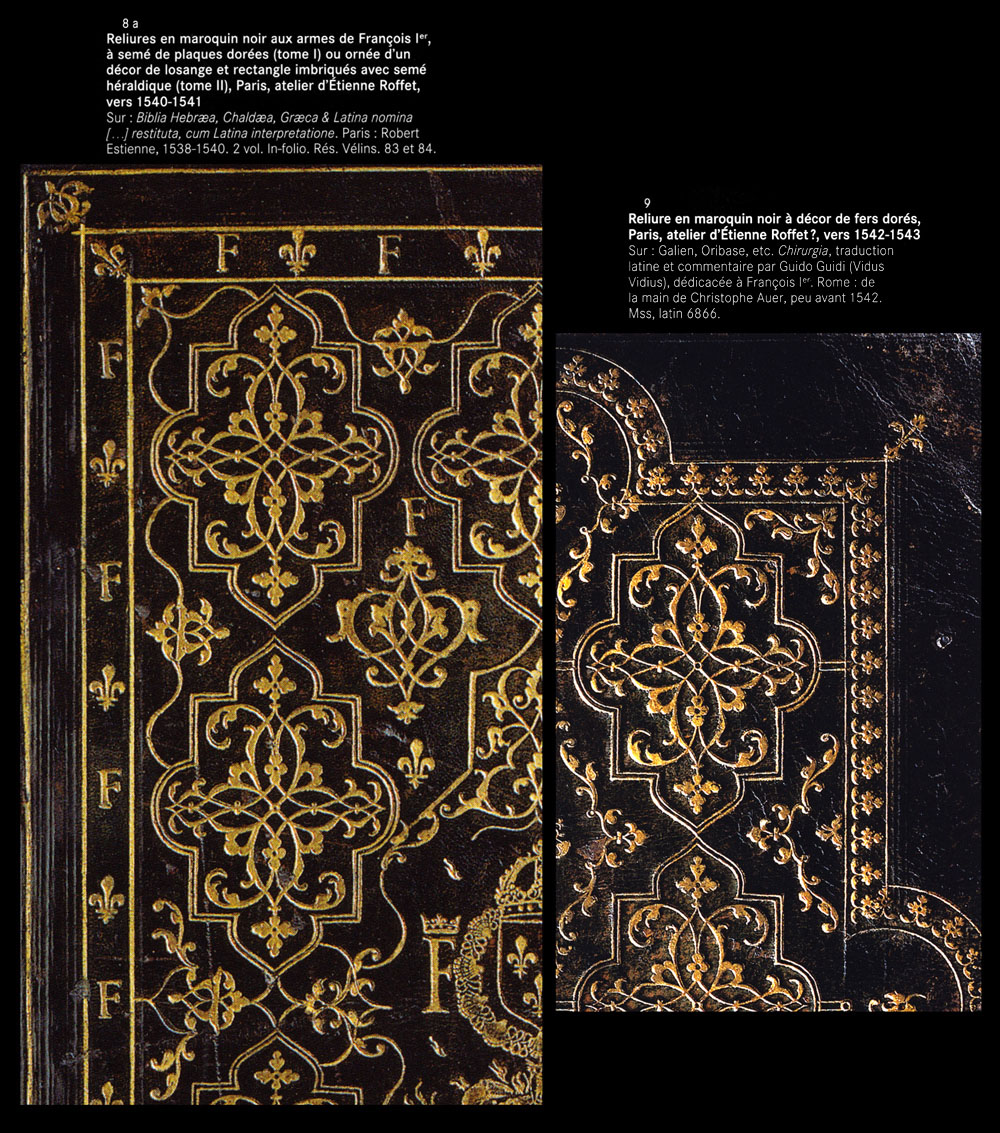
| In Comparative Diagram 4, I show enlarged examples of the plague imprints from both bindings shown in Comparative Diagram 3. (click ton the diagram to see an enlargement). This is the first most important and critical issue, whether these plaque imprints derive from the same tool? It is a very close call, however I think there is a strong probability that these plaque imprints derive from the original Roffet tool. |
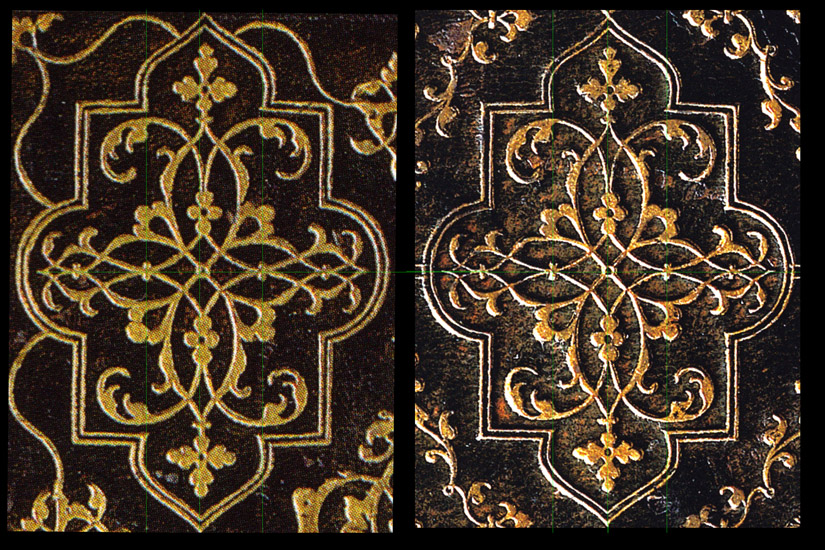
| In their analysis of binding number 9, Lafitte & Fabienne Le Bars mention Esmerian's Roffet example No. 31, Vol. 1 1972). Esmerian's photo of this binding is not a direct frontal image and therefore I have had to "correct" this image to be able to show it below, we can now compare some imprints from these bindings |
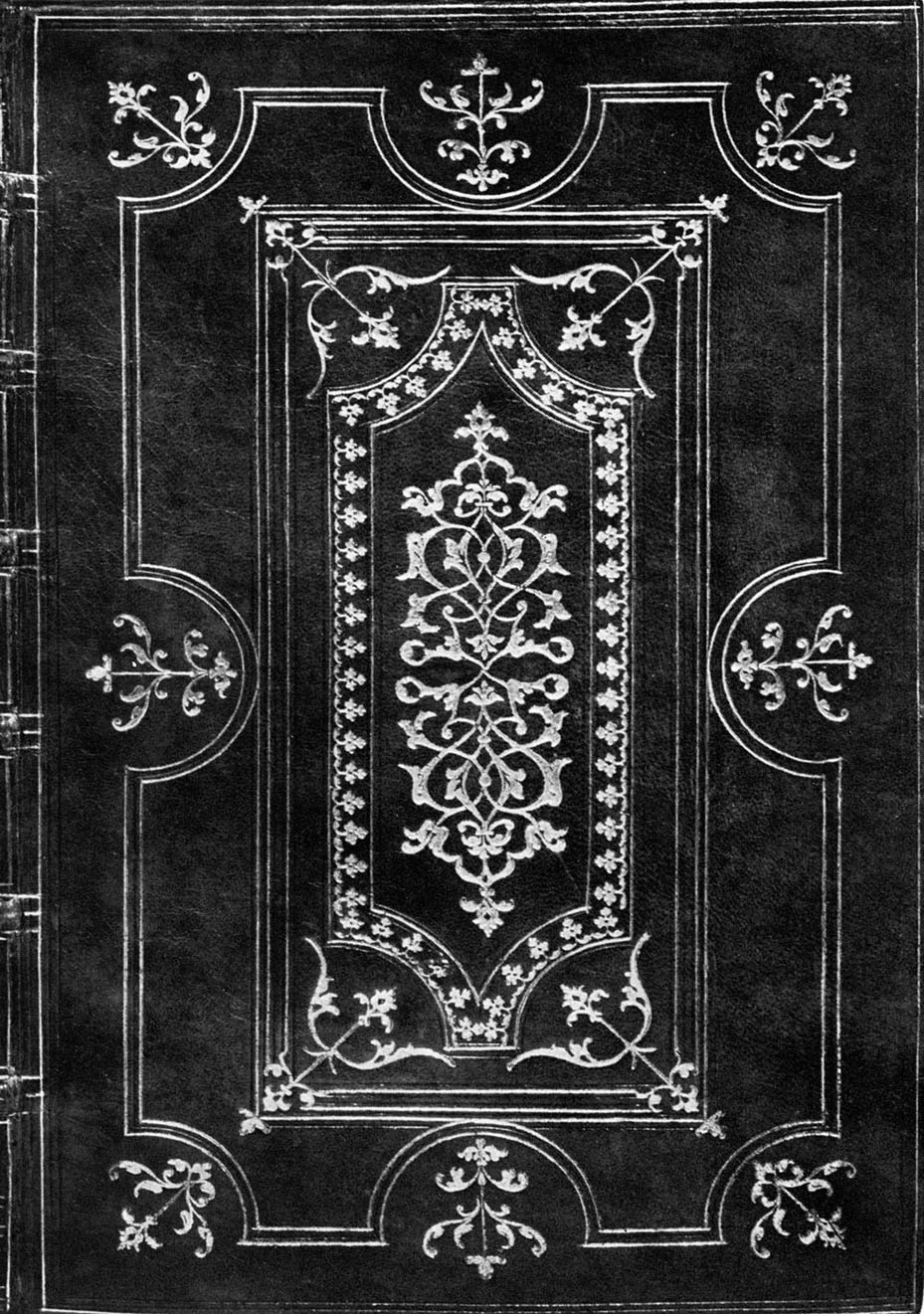
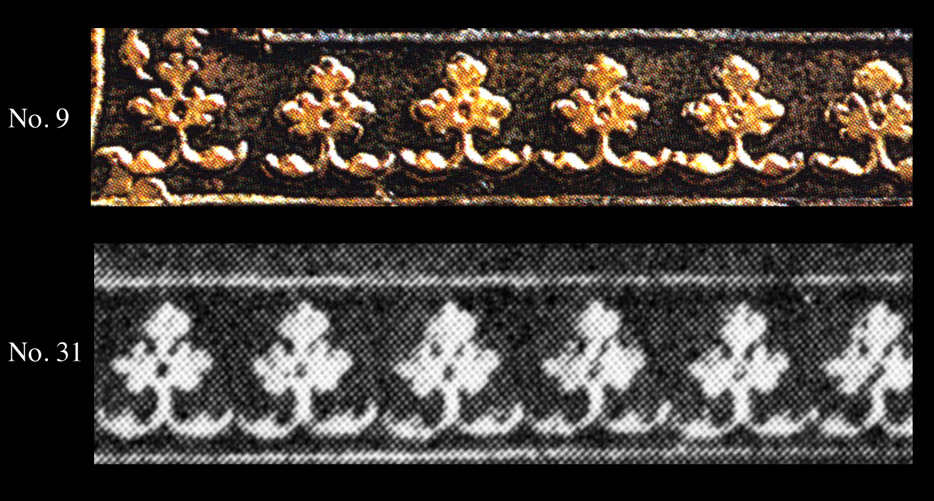
| In Comparative Diagram 6, I show imprints from Esmerian's No. 31 as well as imprints from the Estienne Bible No. 8a, both are probably Roffet bindings and the imprints match fairly well however compared to the same type of imprint from binding No. 9 we see differences! The imprints in Comparative 5 match up fairly well however the image quality of Esmerian's photograph is not good (modern printing!) |
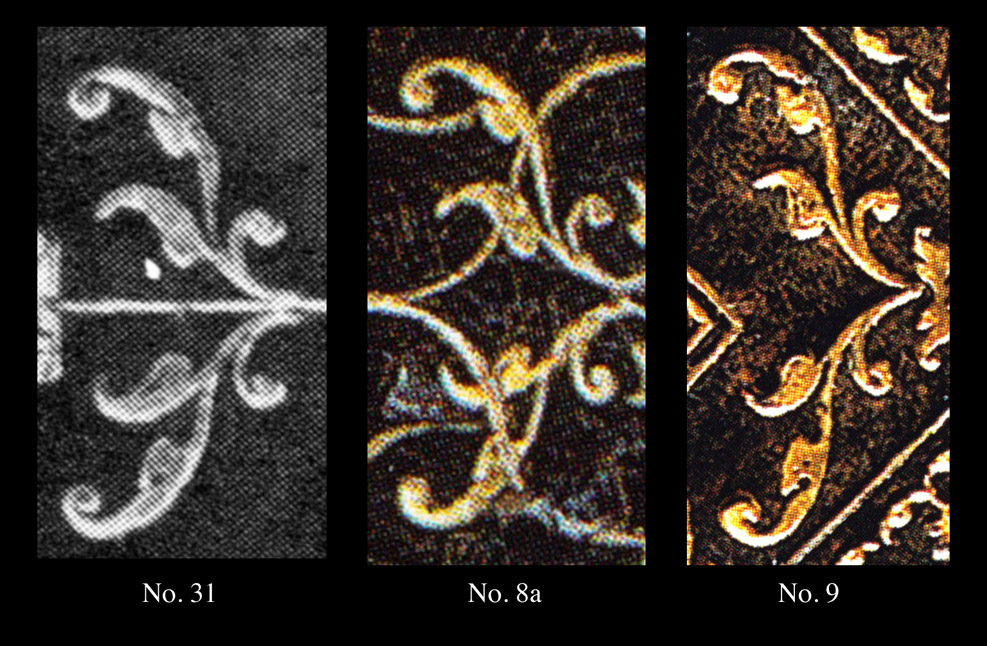
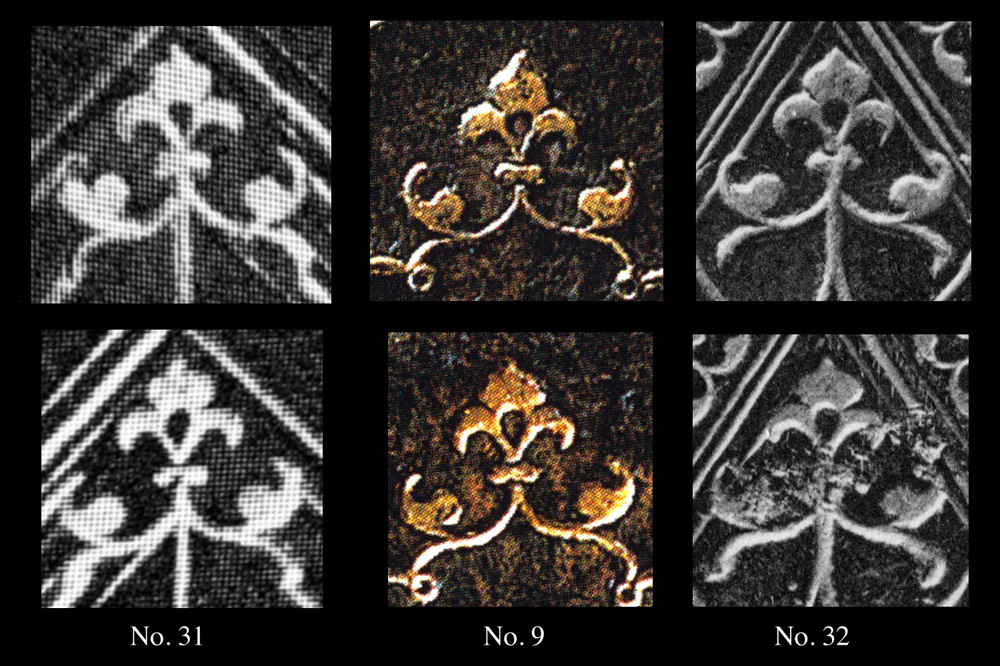
| In Comparative Diagram 7, I show imprints from Esmerian's No. 31 as well as imprints from the Gumuchain catalogue XII, No. 32, both are probably Roffet bindings compared with the same kind of imprint from binding No. 9. All the imprints match fairly well. |
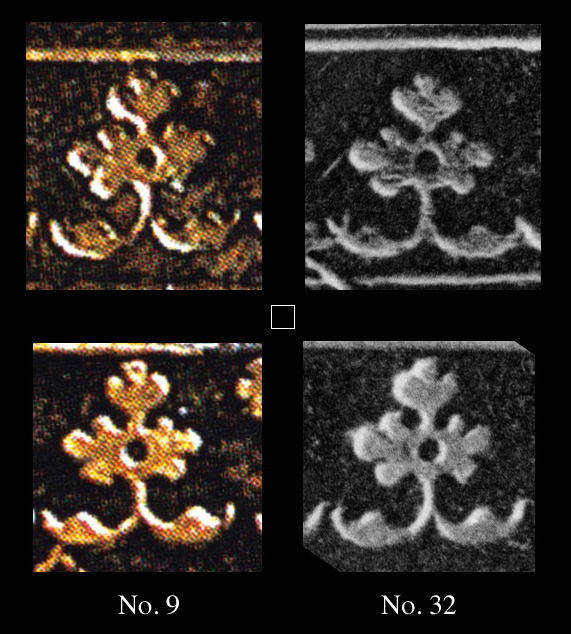
| In Comparative Diagram 8, I have returned to looking at this imprint in high resolution (600 dpi) and it looks very close and probably these imprints derive from the same Roffet tool. Thus there is a mixture of tools used on the number 9 binding but many are probably Roffet tools and so I suspect that Davis332 is also a Roffet binding. After completing this page I can see that we need to collect all the Roffet bindings on one page along with all the tools as I have done with the Salel binder (see this page). |
| information about the author | return to the home page of VIRTUAL BOOKBINDING |